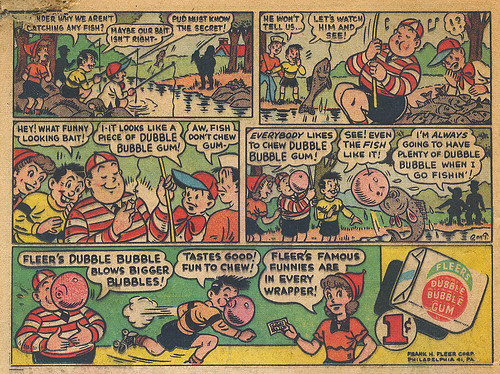If you grew up in the 1950s you probably remember Keds, Converse, and maybe PF Flyers. Ball-Band? Never heard of them.
I have no memory of these shoes made by the Mishawaka Rubber & Woolen Mfg. Co. in Mishawaka, Indiana.
This ad is from the July-August 1951 Archie comic. It amazes me how many of the ads in this one comic are comics themselves. I did find a series of these comic ads online at ebay, but no actual information about how the idea came about or if they had running characters.
Click on image to see it larger.
The following is a little history of the Mishawaka Rubber & Woolen Mfg. Co. once located at 312 N. Hill St., Mishawaka, Indiana.
(Courtesy of the Mishawaka-Penn Public Library historical archives)In 1867 Jacob Beiger puchased a small wooden mill built in 1838 near the dam and Mishawaka Woolen Manufacturing Company was born. Incorporated in 1874, the company produced red flannel boots. Adolphus Eberhart and Martin Beiger invented All Knit Boots in 1886. They were made with a black band around the top and when a red ball was later added the Ball Band trademark resulted.Stakes were driven for the first rubber-making plant in 1897. In 1899 the company was authorized to build a new four-story warehouse. More improvements were added after 1900 because of an increase in sales. After Martin Beiger’s death in 1903, a 30-man syndicate took control of the company. Later, Mishawaka Woolen Company became a subsidiary of U.S. Rubber.In 1921 a five-story storage and warehouse building designed by Albert Kahn was erected. The name of the company was changed to Mishawaka Rubber and Woolen Manufacturing Company in 1923, and to Uniroyal, Inc. in 1967. All footwear manufactured by Mishawaka Rubber Company was discontinued in 1969, and, due largely to the price pressures from foreign competition, Mishawaka Rubber Company was dissolved. Uniroyal closed after filing bankruptcy on April 1, 1997. All the buildings were demolished/imploded a few years later. Today, the site is home to the C. Beutter Riverfront Park. (SOURCE: Goldstein, Deborah May. Made in South Bend/Mishawaka. Discovery Hall Museum, 1980.
















